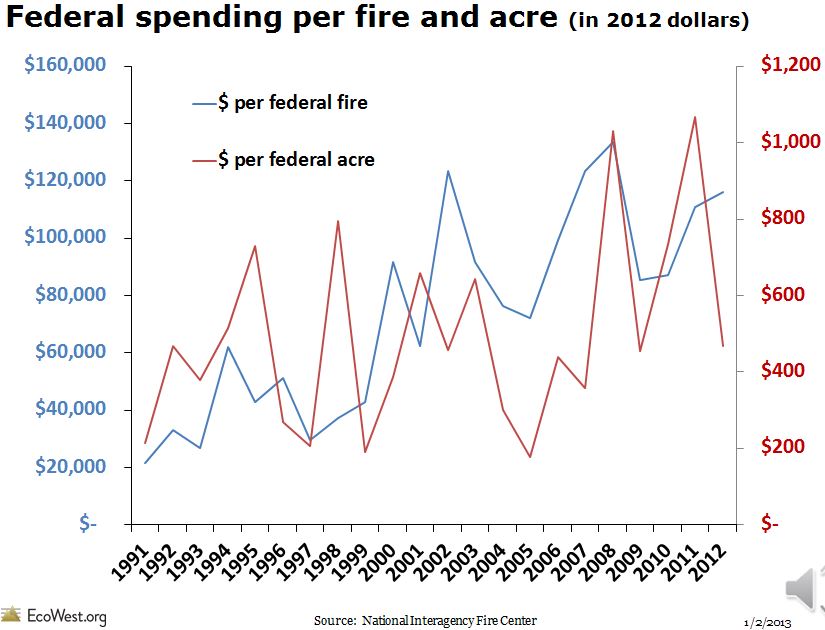Fire Safe San Mateo News
Colorado Conference Explores the True Cost of Wildfires
Adapted from http://wildfiretoday.com/2014/04/18/the-true-cost-of-wildfire/
A recent conference in Glenwood Springs, Colorado explored The True Cost of Wildfire.
Usually the costs we hear associated with wildfires are what firefighters run up during the suppression phase. The National Incident Management Situation Report provides those numbers daily for most ongoing large fires. But other costs may be many times the cost of suppression, including the value of structures burned, crops and pastures ruined, economic losses from decreased tourism, medical treatment for the effects of smoke, salaries of law enforcement and highway maintenance personnel, counseling for victims, costs incurred by evacuees, infrastructure damage and shutdowns, rehabilitation of watersheds, forests, flood and debris flow prevention, and repairing damage to reservoirs filled with silt. And of course there can not be a value placed on the lives that are lost in wildfires. In Colorado alone, fires since 2000 have killed 8 residents and 12 firefighters.
The total cost of a wildfire can be mitigated by fire-adaptive communities, hazard fuel mitigation, fire prevention campaigns, and prompt and aggressive initial attack of new fires with overwhelming force by ground and air resources. Investments in these areas can save large sums of money. And, it can save lives, something we don’t hear about very often when it comes to wildfire prevention and mitigation; or spending money on adequate fire suppression resources.Below are some excerpts from a report on the conference that appeared in the Grand Junction Sentinel:
[Fire ecologist Robert] Gray said the 2000 Cerro Grande Fire in New Mexico ended up having a total estimated cost of $906 million, of which suppression accounted for only 3 percent.Creede Mayor Eric Grossman said the [West Fork Complex] in the vicinity of that town last summer didn’t damage one structure other than a pumphouse. But the damage to its tourism-based economy was immense.“We’re a three-, four-month (seasonal tourism) economy and once that fire started everybody left, and rightfully so, but the problem was they didn’t come back,” he said.
A lot of the consequences can play out over years or even decades, Gray said.He cited a damaging wildfire in Slave Lake, in Alberta, Canada, where post-traumatic stress disorder in children didn’t surface until a year afterward. Yet thanks to the damage to homes from the fire there were fewer medical professionals still available in the town to treat them.“You’re dealing with a grieving process” in the case of landowners who have lost homes, said Carol Ekarius, who as executive director of the Coalition for the Upper South Platte has dealt with watershed and other issues in the wake of the 2002 Hayman Fire and other Front Range fires.
The Hayman Fire was well over 100,000 acres in size and Ekarius has estimated its total costs at more than $2,000 an acre. That’s partly due to denuded slopes that were vulnerable to flooding, led to silt getting in reservoirs and required rehabilitation work.“With big fires always come big floods and big debris flows,” Ekarius said.Gray said measures such as mitigating fire danger through more forest thinning can reduce the risks.
The 2013 Rim Fire in California caused $1.8 billion in environmental and property damage, or $7,800 an acre, he said.“We can do an awful lot of treatment at $7,800 an acre and actually save money,” he said.Bill Hahnenberg, who has served as incident commander on several fires, said many destructive fires are human-caused because humans live in the wildland-urban interface.“That’s why I think we should maybe pay more attention to fire prevention,” he said.
Just how large the potential consequences of fire can be was demonstrated in Glenwood Springs’ Coal Seam Fire. In that case the incident commander was close to evacuating the entire town, Hahnenberg said. “How would that play (out)?” he said. “I’m not just picking on Glenwood, it’s a question for many communities. How would you do that?” He suggested it’s a scenario communities would do well to prepare for in advance.
The chart below from EcoWest.org shows that federal spending per wildfire has exceeded $100,000 on an annual basis several times since 2002. Since 2008 the cost per acre has varied between $500 and $1,000. These numbers do not include most of the other associated costs we listed above.

Copyright 2012-2023. FIRE SAFE San Mateo County | SiteAdmin | Web Design by XMR Fire